| Title | Pages |
|---|---|
| Influence of Charge Conditions on Battery Dynamics of A Commercial Lithium-Ion Cell Electrochemical impedance spectroscopy measurements were performed to determine the effect of the state-of-charge, charge current, and current-drop time on battery dynamics of a commercial 2032 lithium-ion coin cell. The impedance response was systematically investigated and discussed by using the Taguchi design. The results showed that the state-of- charge had a statistically significant effect on both the resistance for solid electrolyte interphase formation and cathodic charge transfer resistance. It was showed that the Taguchi design is a valuable tool for analyzing battery dynamics obtained through the equivalent circuit model. The Taguchi design opened the door for a robust design of lithium-ion batteries in real life. 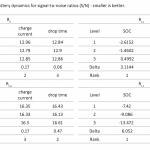
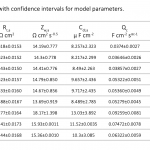
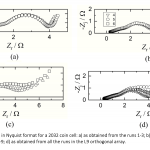

|
203 - 210 |
| Apoptotic Effects of Beta-Carotene, Alpha-Tocopherol and Ascorbic Acid on PC-3 Prostate Cancer Cells Prostate cancer (PC) is one of the most commonly diagnosed cancer types being the second major reason of cancer-associated death in male particularly over the age of 50. Accumulating scientific evidences suggest the role oxidative stress and reactive oxygen species (ROS) in prostate cancer. A variety of factors including carcinogenic molecules, infectious diseases and toxic compounds can induce ROS production which turns into a strong contribution to the disturbed homeostasis and genetic mutation. Antioxidants can decrease the negative effects of ROS in vitro. Vitamin C (Ascorbic acid, Asc), vitamin A (beta carotenoids and retinoids, β-Crt) and vitamin E (alpha tocopherol, α-Toc) play an important role in inhibition of oxidative stress and diminishing of free radicals in the body. The aim of this study was to determine the anticancer effect of α-Toc, β-Crt and Asc on PC-3 prostate cancer cells in vitro. This was carried out by cell proliferation, ROS and Lipid Peroxidation assay, caspase-3 and propidium iodide staining experiments. The findings suggest that these agents behave as prooxidant by lowering cell viability and increasing the production of ROS and LPO in prostate cancer. These oxidants induce apoptosis as supported by caspase-3 (the enzyme playing key role in programmed cell death) staining by displaying a marked increase in the expression level of caspase-3 enzyme. 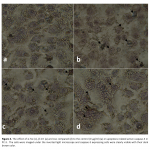
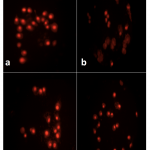
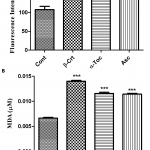

|
211 - 218 |
| Disulfide-Rich Peptides in Drug Development Peptides are important biomolecules in drug development with their high specificities to their targets. Many peptide-based drug candidates have been increasingly involved in clinical and preclinical studies. Unfortunately, peptides have some disadvantages such as poor metabolic stability, poor oral bioavailability and high production costs. These problems can be overcome by modifications that have been inspired from highly stable disulfide-rich peptides already found in nature. This review describes the structure and bioactivity of disulfide-rich peptides and their development with various modifications to become candidate molecules in drug design and development studies. 
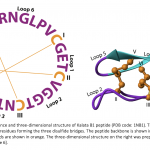
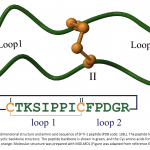

|
219 - 229 |
| The Effect of Exercise at High Altitude on Muscle Serum Enzymes and Some Biochemical Parameters High altitude conditions cause changes in organism functions. Low oxygen concentration, low heat and exposure to ultraviolet rays for a long time trigger these changes. In our study, the effects of exercise at 1055 m and 2500 m on: the levels or activities of malondialdehyde (MDA), creatinine, lactate dehydrogenase (LDH) and aspartate aminotransferase (AST), total protein, glucose, cholesterol were investigated. Twelve healthy individuals were included in the study. They exercised 3 hours a day for 5 days in both altitudes. Blood samples were taken and placed into the tubes with anticoagulants, both at the first day and on the fifth day, at 1055 m and 2500 m altitude before and after exercise, the samples were then centrifuged and separated from their plasma. The resuts indicate that glucose and AST (aspartate aminotransferase) increased at 2500 meters, while MDA (malondialdehyde) decreased. At 1500 meters, glucose and creatinine were found to be released, while AST (aspartate aminotransferase) was decreased. Considering the samples taken 10 days after the volunteers returned from 2500 m to 1055 m, the results were found to approach 2500 m pre-exercise values. When the results of 1055 m and 2500 m were compared to the 1st and 5th days, glucose and creatinine were found to be increased both at 1050 m and at 2500 m. It was observed that LDH (lactate dehydrogenase) increased significantly at 5th of 2500m compared to 1st day. Our results showed that both exercise and high altitude affect muscle serum enzymes and glucose MDA values, but these changes do not pose a risk of disease that would require medical intervention. 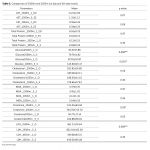
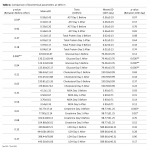
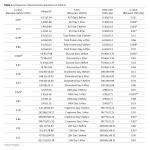
|
231 - 238 |
| Comparison Essential Oil Contents Origanum majorana L. Obtained by Hydrodistillation and SFE The volatile components of Origanum majorana L. essential oil obtained from both hydrodistillation and supercritical fluid extraction (SFE) were determined by GC–MS and GC-FID. Extraction of these biologically active compounds requires the usage of large amounts of environmentally unfriendly solvents and technologies operating with high costs. Supercritical fluid extraction is an environmentally friendly and efficient extraction technique for solid materials, being extensively studied for the separation of active compounds from herbs and other plants. The essential oil obtained by SFE contains mainly carvacrol (76.69% with GC-MS and 91.95% with GC-FID) which are responsible for the characteristic flavour and fragrance of marjoram oil. And also to compare with SFE, the essential oil obtained by hydrodistillation contains mainly carvacrol (70.47% with GC-MS and 89.00% with GC-FID). It can be concluded that almost all the biologically active compounds from marjoram herb can be efficiently extracted by SFE. 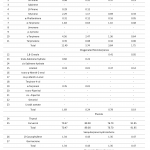
|
239 - 244 |
| Microfluidic Devices: A New Paradigm in Toxicity Studies In recent years, great emphasis has been placed on non-animal toxicological methods (e.g. in vitro models, in silico or −omics data) as alternative strategies to reduce animal-testing, in line with the 3R (Replacement, Reduction, and Refinement) principle. These methods help in the rapid and accurate estimation of preclinical efficacy and safety associated with discovery of new drugs, and reduction of failure rates in clinical trials. Currently, the in vitro studies have been in a transformation or replacement from two-dimensional (2D) cell cultures to three-dimensional (3D) cell cultures that can mimic the physiology of tissues, organs, and organisms. In this context, organ-on-a-chip systems have been developed by integration of 3D culture models with emerging microfluidic technologies. Since the organ-on-a-chip systems provide a good understanding of dose-response and toxicity mechanisms in drug research and development (R&D), the impact of xenobiotics on the human body can be predicted in a satisfactory level. Besides, these systems may support assessment of pharmacokinetic-pharmacodynamic parameters as well as detection of drug resistance. Models can be generated as “disease-models-on-a-chip” or with healthy cells to the evaluate response to xenobiotic under test. In this review, we will focus on the microfluidic systems being used in organ-on-a-chip systems and emphasize their potential for toxicity studies in which micro-environments of examples including liver, kidney, brain, lung, heart, and intestines and their physiological properties as reflected to organ-on-a-chip models. 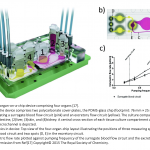
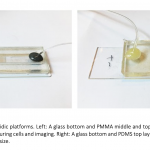
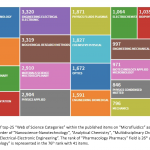
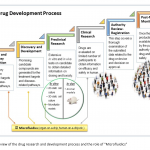
|
245 - 263 |
| A Retrospective Study on Urinary Tract Infection Agents Isolated from Children and Their Antibiotic Susceptibility Antibiotics are important agents in the treatment of urinary tract infection (UTI). However, the use of antibiotics is an important risk factor causing antibiotic resistance. Antibiotic inappropriate resistance is one of the most important problems of increased uropathogenic resistance, especially in pediatric urology. Deficiencies in empirical prescription practices can make this problem even worse. In this study, the demographic characteristics of pediatric patients, UTI agents, and antibiotic resistance of these agents were retrospectively evaluated by an automated system. The data from 719 UTI agents isolated from children were separately analyzed for four different age groups (0-2, 2-6, 6-12, and 12-17). The most commonly isolated infection agents were Escherichia coli (68.01%), Klebsiella pneumoniae (19.75%), Klebsiella oxytoca (3.34%),Enterobacter cloacae (2.23%), and Pseudomonas aeruginosa (1.95%). Among the age groups, 0-2 age group was quite diverse in terms of infection agents and antibiotic resistance values of these agents were significantly high in this group (p<0.05). Regarding the antibiotic resistance, the most noteworthy ones were the resistance against ampicillin (70.2%), amoxicillin- clavulanate (49.0%), cefixime (38.2%), and trimethoprim/sulfamethoxazole (37.1%). Our study indicated that children in 0-2 age group were under higher risk in terms of UTI agents and their antibiotic resistance but this risk was reduced with increasing age. Moreover, the ratio of girls with UTI was greater than that of boys within 0-2 age group. There was high resistance against cephalosporin, ampicillin, amoxicillin-clavulanate, and trimethoprim/sulfamethoxazole, whereas the resistance against carbapenem (imipenem, ertapenem and meropenem) was found to be low and there was no significant increase. 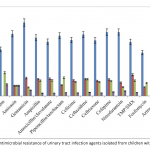



|
265 - 274 |
| The Effects of Match Conditions on the Shaped Elements of Blood And Iron Level of Football Players The conditions of football match and intensive exercise changes the hematological parameters. It is also known that, endurance training causes “sports anemia” which is an athlete specific anemia type. The purpose of our study is to research the effects of pre-match and post-match on the shaped elements of blood and iron level of football players. The study group consisted of 12 volunteer male athletes who are playing football in Turkish A2 League for ‘Erciyes Spor Kulübü’. The pulsations, systolic/diastolic blood pressures, vertical/long jumps and elasticity of participating football players are measured and their blood samples were taken before and after the football match. There were statistically significant differences between the values of erythrocyte, leukocyte, thrombocyte, iron and iron binding (p<0.05) whereas there weren’t any significant differences between PCT (procalcitonin), RBC (red blood cell) and MCH (mean cell hemoglobin) levels (p>0.05) in football players before and after the match. According to our results, match conditions and intensive exercise cause serious changes in iron levels and shaped elements of blood. The blood samples which will be taken at the pre-season, mid-season and late-season periods in accordance with the frequencies specified in the current literature can be important to follow the individual blood profile standards of each football players. 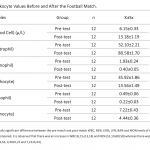

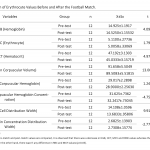
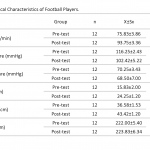
|
275 - 282 |
| One-pot Three-component Synthesis of Novel Quinazoline-4-carboxylic Acid and Derivatives 2-Phenyl-quinazoline-4-carboxylic acid (2) was synthesized from the one-pot three-component reaction of (2-amino-phenyl)-oxo-acetic acid sodium salt obtained from the hydrolysis of isatin with ammonium acetate and benzaldehyde. Some novel quinazoline-ester derivatives (3a-d) were then obtained by the reaction between 2 and various alcohols. Finally, quinazoline-amide derivatives (5a-e) were synthesized from the reaction of various amines and 2-phenyl-quinazoline-4- carbonyl chloride (4), obtained by the reaction of compound 2 with SOCl2. The structures of synthesized compounds were clarified by 1H NMR, 13C NMR, IR, mass spectrometry analysis methods. 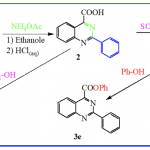
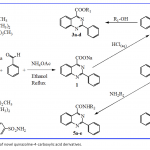
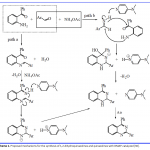
|
283 - 290 |
| Investigation of The Synergistic Effects of Trastuzumab And Gambogic Acid in Her-2 Positive Breast Cancer Cell Line HER2 positive breast cancer is one of the biggest health problems in the world, causing millions of deaths every year. Drug combination modeling studies are extensively evaluated in treating many diseases. Pharmacological studies over the last half-century have shown that gambogic acid has potent anti-tumor activity against many types of cancer, including breast cancer. In this study, we examined the synergistic anticancer effect of gambogic acid and trastuzumab in HER2 positive breast cancer cell line (MDA-MB-453). In-vitro synergistic and antiproliferative effects of trastuzumab plus gambogic acid studies were determined with XTT method and the combination index (CI) values of the trastuzumab and gambogic acid combination were calculated by CompuSyn software. To determine molecular mechanisms of the trastuzumab and gambogic acid combination in MDA-MB-453 cells, the differences of gene and protein expression levels of HER2, caspase-9 and Bax were analyzed with using RT-qPCR and ELISA techniques. The combination of 50 μg/ml trastuzumab and 5 μM gambogic acid showed the best synergistic effect at 24 h incubation in MDA-MB-453 cells according to the in-vitro cell proliferation, RT-qPCR and ELISA test. Gambogic acid effects on HER2 positive breast cancer cell line shows its potential as natural compound to inhibit breast cancer cell proliferation in combination with trastuzumab. 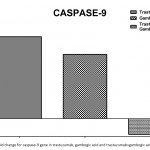
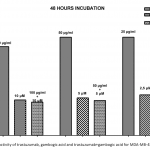
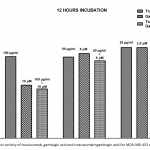
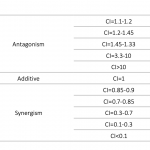
|
291 - 299 |
| Microstructure and Rheology of Whey Protein Based Hydrogels Protein hydrogels have great potential for food and biomedical applications due to their ability to create three dimensional gel networks. A dairy industry by-product whey contains valuable proteins capable of forming gels with the ability of holding excess amount of water and entrap active ingredients. This enables a wide use of whey proteins for various applications in food formulations. Whey protein gelation is commonly promoted by heat and the gel characteristics can be enhanced by blending whey proteins with suitable carbohydrates. Mechanical properties and microstructure of gel networks determine their availability for target applications such as entrapment of active agents by maintaining their stability, target delivery and texture improvement of food products. The objective of this study was to investigate structural and mechanical features of whey protein -sodium alginate gels using microscopy, spectroscopy and rheometry. Rheological and structural properties of gels obtained by different preparation protocols and composition differed significantly. Porosity in the gel microstructure changed remarkably as the gel composition changed. Also, some conformational changes were tracked by studying the secondary structure of proteins during gel formation. Further research will focus on investigation of these whey protein-based gels for the entrapment ability and release behavior of bioactive components. 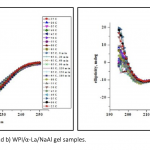
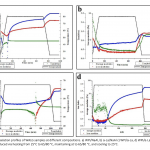
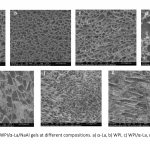
|
301 - 307 |